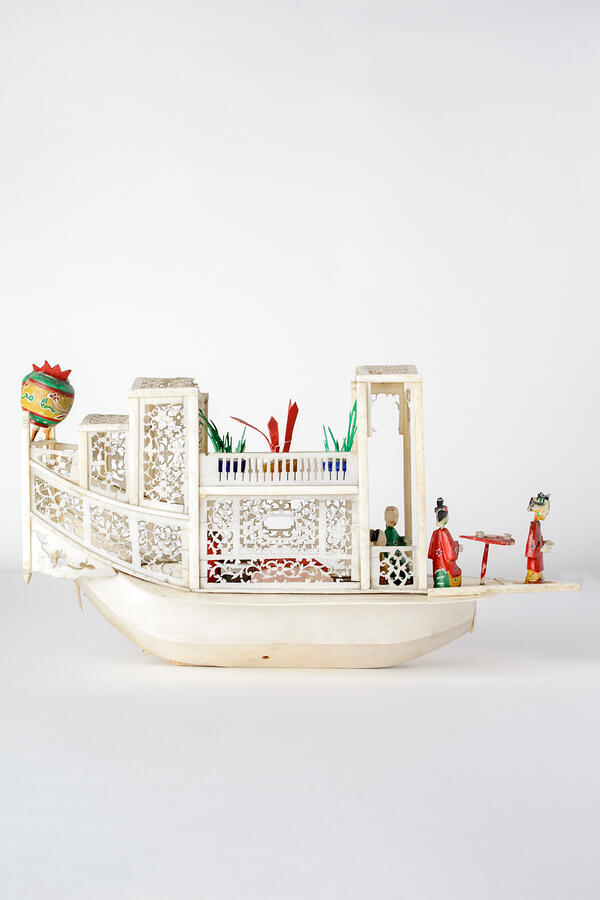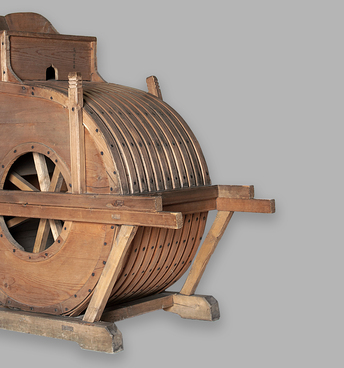Ivory carving is one of China’s oldest arts. Europeans became fascinated with exotic ivory items carved by Chinese craftsmen in the 18th and 19th centuries.
The tradition of Chinese ivory carving dates back several thousand years. Archaeologists have discovered carved items among ancient excavations, including carved combs, cups, women’s jewelry, images of long-tailed birds, and spoons. Ivory carving is a painstaking process. Elegantly carved items have always made a great impression with their delicate lines resembling a spider’s web.
Genuine ivory is a dense and hard white substance. The structure of ivory is designed to prevent crack propagation, and its density is perfect for crafting remarkably thin, almost transparent layers.
Particularly complicated and detailed products were made up of several pieces joined together. Finished ivory products were polished and varnished. They could be painted or could retain the natural matt-white surface. In some countries, carved boat models were called “flower boats”. Chinese junks (flat-bottomed boats) were rented for recreational use.
The flat-bottomed junk boat from the museum’s collection features remarkably delicate carving. It is characterized by exquisite craftsmanship, a bright white surface, and luxurious décor with floral patterns.
The displayed exhibit is a two-story boat. The second story is a roof terrace with flowerpots. The walls of the structure are also made of ivory and decorated with an openwork relief.
On the small fore deck, near the table, there is a group of people, on the stern — two poles with painted lanterns, and below — a movable rudder. The model is extremely detailed. Even the flowerpots are made of ivory. Such a model could be used as a pot-pourri vase with dried fragrant flowers and herbs placed inside.





